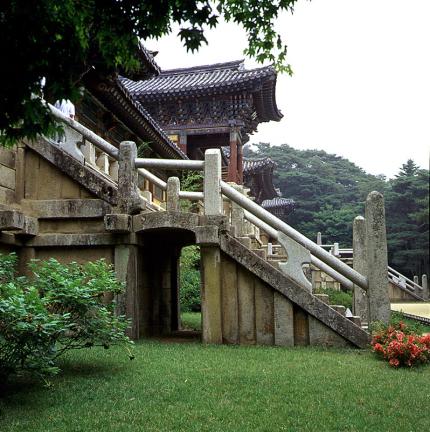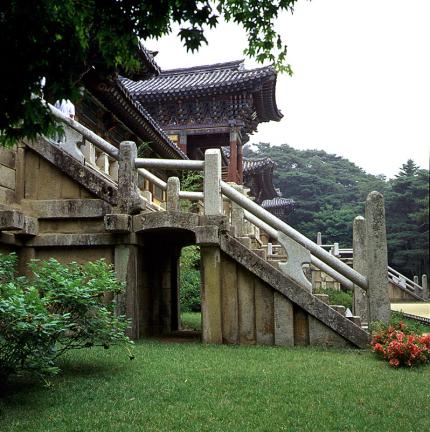국가유산 검색
국보
경주 불국사 연화교 및 칠보교 (慶州 佛國寺 蓮華橋 및 七寶橋)Yeonhwagyo and Chilbogyo Bridges of Bulguksa Temple, Gyeongju
| 분 류 | 유적건조물 / 교통통신 / 교통 / 교량 |
|---|---|
| 수량/면적 | 1기 |
| 지정(등록)일 | 1962.12.20 |
| 소 재 지 | 경북 경주시 불국로 385, 불국사 (진현동) |
| 시 대 | 통일신라시대 |
| 소유자(소유단체) | 불국사 |
| 관리자(관리단체) | 불국사 |


국보
경주 불국사 연화교 및 칠보교 (慶州 佛國寺 蓮華橋 및 七寶橋)Yeonhwagyo and Chilbogyo Bridges of Bulguksa Temple, Gyeongju
| 분 류 | 유적건조물 / 교통통신 / 교통 / 교량 |
|---|---|
| 수량/면적 | 1기 |
| 지정(등록)일 | 1962.12.20 |
| 소 재 지 | 경북 경주시 불국로 385, 불국사 (진현동) |
| 시 대 | 통일신라시대 |
| 소유자(소유단체) | 불국사 |
| 관리자(관리단체) | 불국사 |

ⓒ 2000. CULTURAL HERITAGE ADMINISTRATION. ALL RIGHTS RESERVED.



 문화유산
문화유산


